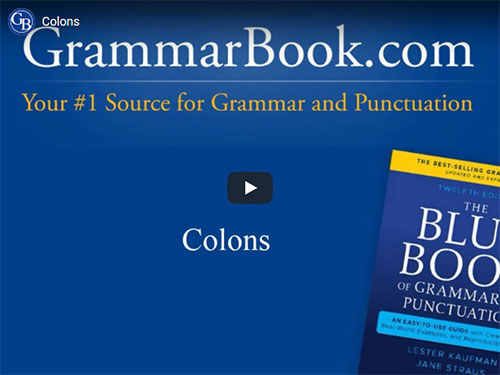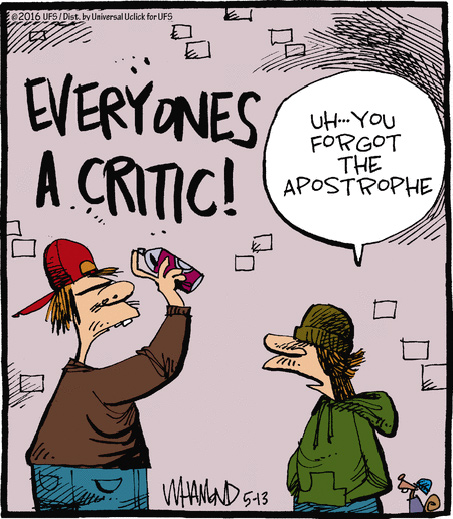|
We often relate the word “verb” with an action: We eat, we work, we talk, we sleep. These verbs are also referred to as dynamic verbs.
However, not all verbs describe physical actions. Some express:
| senses |
opinions |
| thoughts |
ownership or measurement |
| states of being |
emotions or feelings |
Such verbs are known as stative verbs.
Examples
I like pizza with green peppers and onions.
Josette wants to install a soaring arch over her backyard.
They felt joy over their top-three finish in the state tournament.
That rake belongs to me. |
We can recognize these words as verbs, but they do not involve an activity in motion or physical practice.
More Stative Verb Examples
| Senses |
Opinion |
| That looks like peanut butter to me. |
Mark agrees with you. |
| The cookies in the oven smell wonderful. |
Does the coach doubt they can win? |
| The soup tastes spicy. |
The principal supports the teacher's decision. |
|
|
| Thoughts |
Ownership and Measurement |
| Anna thinks you are correct. |
Andrew has two vintage hi-fi stereo systems. |
| Maria believes in good karma. |
The punching bag weighs eighty pounds. |
| Sally remembers the gift Markus gave her. |
That fountain pen belongs to Jamaal. |
|
|
| State of Being |
Emotions and Feelings |
| That mountain view is breathtaking. |
Damian loves Fatimah. |
| Risha and Ved are excellent students. |
Robert hates sweet potatoes. |
| I am encouraged by the facts you've given. |
Do you really need that boy-band poster? |
Stative Verbs: Not Always Progressive
Another factor distinguishing stative verbs from dynamic verbs is that some may not be used in progressive forms. Many of us are familiar with expressions such as:
Randy is throwing a no-hitter through seven innings.
Your grandmother is making her famous Swedish meatballs for dinner.
The cheerleaders are practicing their jumps. |
Now consider how the following sentences sound:
That fountain pen belongs to Jamaal. (present tense)
That fountain pen is belonging to Jamaal. (present progressive)
That fountain pen has been belonging to Jamaal. (present perfect progressive) |
Those familiar with English will recognize that the last two sentences in each group don't sound right. Because stative verbs describe current states and activities that don't involve current mental or physical movement, they will not always be expressed as being in motion. Whether they can be will be determined by the context.
Verbs Both Stative and Dynamic
Compare the sentences in each of the following pairs:
Andrew has three weeks of vacation time this year. (stative)
Andrew is having a productive week. (dynamic)
Turov weighs two hundred pounds. (stative)
Turov is weighing himself right now. (dynamic)
They think the offer is too low. (both stative)
They are thinking about the offer. (dynamic) |
The verb in each first sentence is stative because it describes ownership (has), measurement (weighs), or mental activity not in current motion (think).
In each second sentence, the verb indicates an action in progress, and whether mental or physical, it is being performed in real time. This makes the verb dynamic and proper to express in a progressive form.
Because they involve states and not motion or current activity, stative verbs are often linking (intransitive) verbs, meaning they do not take a direct object. Conversely, as action words, dynamic verbs are commonly acting upon something (an object), making them transitive verbs.
Stative Verbs: Use Them Sparingly
As we've touched on, stative verbs serve roles we need for communication in English. As writers and speakers, we will always encounter instances in which a stative verb is simply the best or only option for an expression.
At the same time, as precise and eloquent writers, we should limit our dependency on them. Because stative verbs convey states of being, they can be more passive and less descriptive. Composing sentences with well-chosen action verbs gives sentences more substance and interest while creating stronger images for the reader.
Consider the following passage that relies on stative verbs:
| Martin was a good guitar player. People liked his music. |
This offers us some information, but because it is plain, we can easily move past it with little true knowledge of Martin's playing.
Now consider the same statements when we exchange stative verbs for active ones that summon greater detail:
| Martin commanded all within earshot whenever he played the guitar. His music led listeners' ears through paths of passion and visions that rushed forth from his heart. |
Related Topics
Ergative Verbs: Usage and Examples
Helping Verbs: Examples of Helping Verbs
| 




